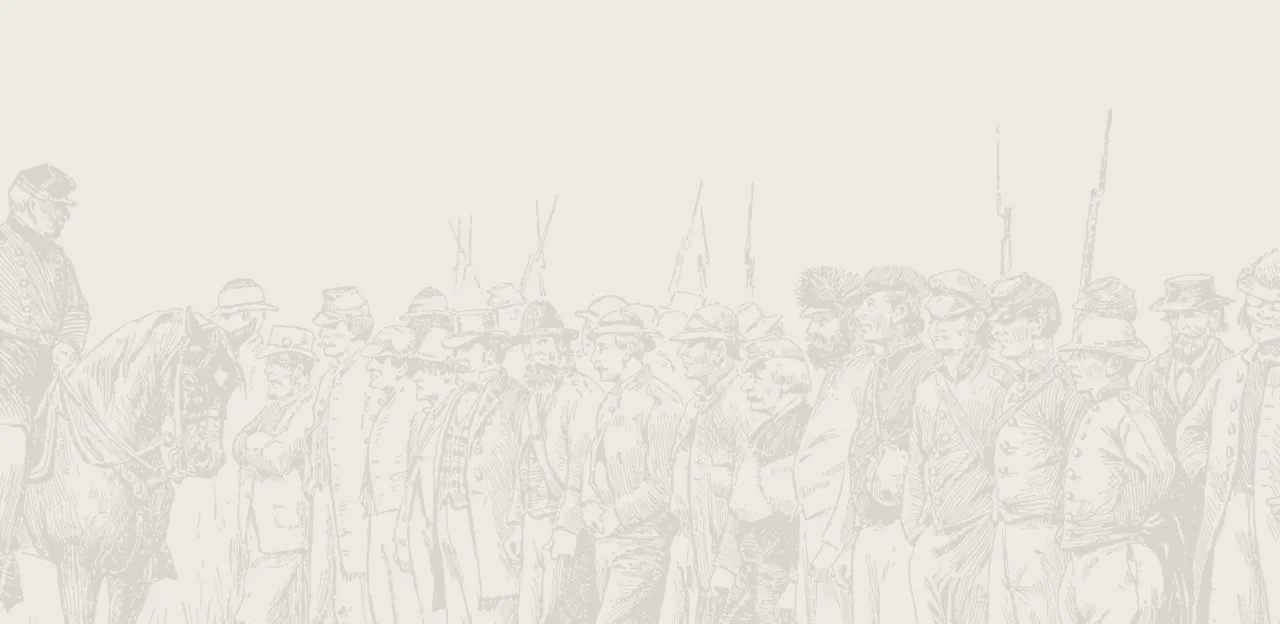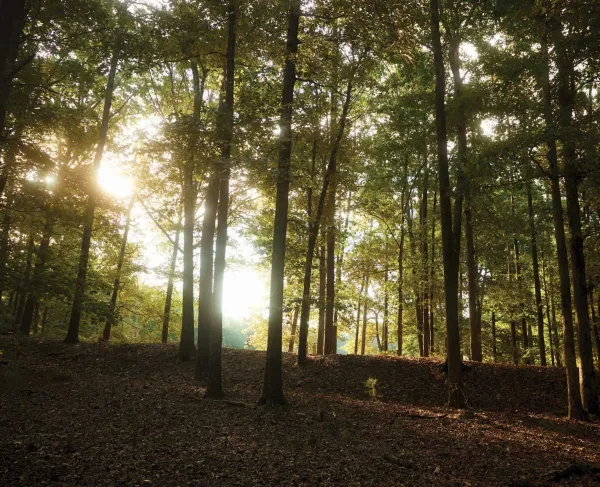Peach Tree Creek

The Battle of Peach Tree Creek
By the first week of July, 1864, Gen. Joseph E. Johnston’s Confederate army had fallen back from its defensive position on Kennesaw Mountain, 25 miles northwest of Atlanta. Sherman followed, his Armies of the Tennessee, Cumberland and Ohio pushing Johnston south toward the Chattahoochee River; the last natural obstacle before Atlanta. Johnston’s engineers had prepared a strong position on the west bank of the river covering the Western and Atlantic Railroad bridge, but Sherman’s infantry crossed upstream of the Confederate defenses. Outflanked yet again, Johnston pulled out of his lines and crossed the Chattahoochee on July 9.
Once over the river, Maj. Gen. James McPherson’s Army of the Tennessee and Maj. Gen. John Schofield’s Army of the Ohio pushed east toward Decatur and the Georgia Railroad, while Maj. Gen. George Thomas’ Army of the Cumberland headed south toward Peach Tree Creek, just four miles north of Atlanta. As Thomas’ army moved forward, his IV and XX Corps held the center and left, with the XIV Corps on the right.
With Federal troops on the east bank of the Chattahoochee and the Army of Tennessee once again in retreat, Jefferson Davis needed to do something the change the direction of the campaign. On July 17, the Confederate president sent a telegram to Johnston informing him that he had been relieved. Lt. Gen. John Bell Hood--known for his aggressiveness under Robert E. Lee and fighting ably under Johnston since Chickamauga--took command the following day. The message was clear: The Confederates in front of Atlanta needed to take the fight to the enemy.
Hood planned to do just that. During the night of July19 he met with his corps commanders to discuss his battle plan. Gens. William J. Hardee and Alexander P. Stewart were to assault Thomas at 1:00 p.m. the next day, beginning on the right en echelon by division, with "everything on our side of [Peach Tree Creek] to be taken at all hazards." The Confederates were to drive the Yankees back to the Chattahoochee, where Hood hoped to crush them before Schofield or McPherson could offer aid.
The plan was sound, because the Federal dispositions on the night of the 19th invited attack. While much of Thomas’ army had splashed across Peach Tree Creek, some troops were still on the north bank, and many of those south of the creek were not yet strongly fortified. Moreover, Schofield’s army had left a two mile-gap separating it from Thomas. If the Confederates struck hard, with luck they might wreck half of Sherman’s army before the rest of it could respond.
Things went wrong for Hood, however, on the morning of the attack. East of Atlanta, Maj. Gen. John A. Logan’s XV Corps threatened the Confederate right, so Hood had to move his whole line in that direction. Hardee’s and Stewart’s corps, drawn up for battle by 1:00 p.m., spent another 90 minutes shifting to new positions a half mile to their right. By that time, the last of Thomas’ army had crossed Peach Tree Creek and some of his brigades had begun digging in on high ground, a half-mile south of the stream.
Hardee, on the right, did not advance until nearly 3:30. His lead division, Maj. Gen. William Bate’s, moved into rough undergrowth in the gap in the Union lines between Thomas and Schofield and was never heavily engaged. Maj. Gen. William H. T. Walker’s division, next in line, made first contact with Brig. Gen. John Newton’s division on Thomas’ left. Walker’s men advanced as the Federals’ opened on them with musketry and cannon fire. The Southerners made repeated charges until about 6:00 p.m. without breaching the enemy works. Hardee’s third division, under Brig. Gen. George Maney attacked next, taking up Walker’s assault as the en echelon attack plan called for. For a while Confederate attackers overlapped Newton’s right flank, but Newton refused his line to repel the Rebels. All along the line Hardee’s attacks had failed.
Maj. Gen. William Loring’s division of Stewart’s corps took up the attack next, moving down the valley of Tanyard Creek (Early’s Creek). Brig. Gen. Winfield S. Featherston’s brigade, on the right, tried repeatedly to make headway, without success. Brig. Gen. Thomas Scott’s brigade, on Loring’s left, struck the XX Corps line, overrunning the Zouaves of the 33rd New Jersey, which had been thrown out in advance of the main line of Brig. Gen. John W. Geary’s division. Scott then came under heavy fire from Col. Benjamin Harrison’s brigade (Brig. Gen. William Ward’s division) and Geary’s artillery.
As Geary’s division repelled Scott on its left, the charge of Maj. Gen. Edward C. Walthall’s Confederate division created a crisis on the other flank. Advancing with three brigades, Walthall’s right brigade, Col. Edward O’Neal’s Alabamians, charged up the ridge along which Collier Road runs and overran Geary’s right. Three regiments of Ohio and Pennsylvania men fell back, but the Union line was stabilized and O’Neal was stopped. Walthall’s left brigade, under Brig. Gen. Daniel Reynolds, drove in skirmishers of Brig. Gen. Alpheus Williams’ division and even took a portion of its main lines. Federal counterattacks and enfilading fire forced Walthall back, causing his attack to fall apart. As darkness approached, Stewart ordered his troops back into their trenches.
By 6:00 p.m. the Battle of Peach Tree Creek was over. Hood’s attack had failed. His losses were around 2,500 men, while Thomas’ casualties numbered about 1,750.





